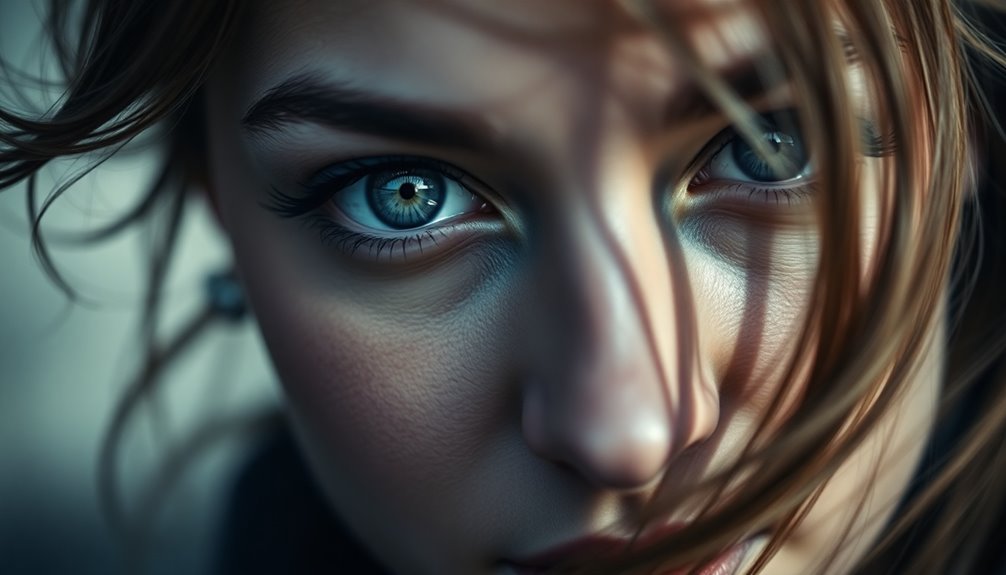Red eyes hold deep spiritual symbolism, representing raw passion and intense emotions. They reflect the duality of fervor and danger, urging you to embrace personal transformation and growth. These crimson gazes remind you of the importance of inner strength and emotional regulation, especially in times of pain. Cultures interpret red eyes in various ways; some view them as symbols of divine beauty, while others see warnings of peril. This complex imagery encourages mindfulness in your journey, pushing you towards self-discovery. Explore further, and you might uncover more about how these powerful symbols can impact your spiritual path.
Key Takeaways
- Red eyes symbolize raw energy and passion, reflecting emotional depth and intensity in spiritual contexts.
- They act as portals to inner truths and intentions, encouraging mindfulness for personal growth.
- In romantic settings, red eyes signify heightened attraction and the deepening of relationships.
- Cultural interpretations of red eyes vary, representing everything from divine beauty to warning signs of danger.
- Red eyes also embody authority and inner strength, reminding individuals of their life force and dedication.
Passion and Intensity
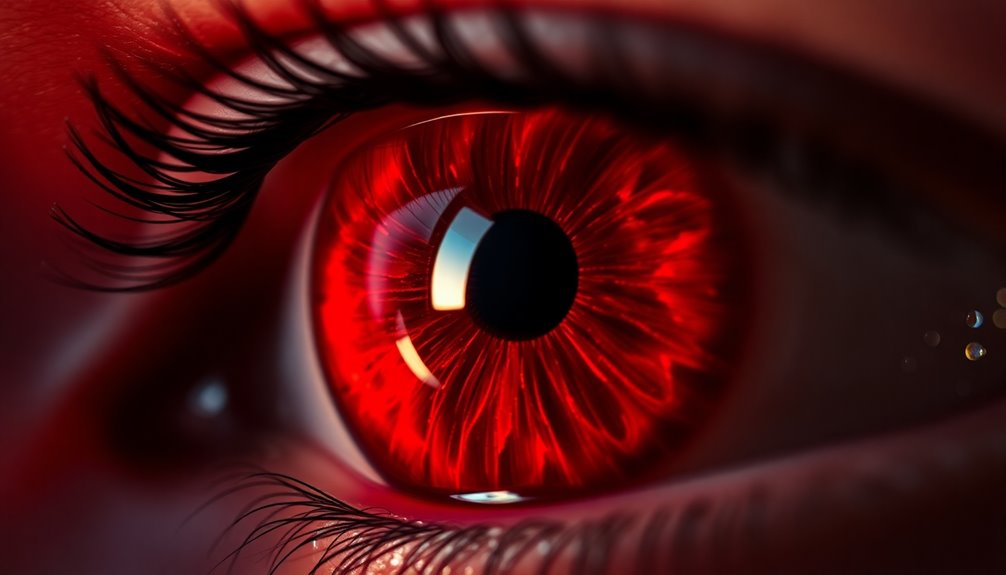
When you think about red eyes, they often symbolize powerful emotions that can range from excitement to deep-seated anger. These intense gazes reflect an inner fire, representing both passion and fervor in various aspects of life. When you feel that rush of energy, it often drives you to pursue your goals with relentless determination. Red eyes can signify that burning desire to succeed, pushing you to overcome obstacles standing in your way.
In romantic contexts, red eyes may indicate heightened attraction or an intensifying relationship, embodying the thrill of new love or the deepening of existing connections. This intensity isn't limited to romance; it can also reflect your enthusiasm toward interests and passions, inspiring you to dive deeper into what excites you. Furthermore, engaging in activities that promote mental clarity can enhance your focus and intensity. Additionally, the bond between a dad and daughter can exemplify how passion and support can fuel personal growth and confidence in pursuing dreams. Moreover, adopting practices from Positive Thinking Day can help harness that passion into positive action for personal growth. Furthermore, red eyes symbolize authority and inner strength, showing a concentrated focus on your objectives. They can also represent your ability to confront and harness powerful emotions, urging you to tap into that energy for positive action. Additionally, harnessing this intensity can lead to a greater understanding of your personal motivations, which can help steer your passions in a constructive direction. Additionally, red eyes can serve as a warning sign for potential mistakes or deception, encouraging you to remain vigilant in your pursuits.
Ultimately, red eyes are more than just a visual phenomenon; they embody the complex interplay of passion and intensity that drives you in your journey.
Warning and Danger

Red eyes can also carry a sense of warning and danger, highlighting their dual nature. In nature, the color red serves as a powerful signal, often indicating toxicity or peril. Many insects and plants use this striking hue to deter predators, making red a universal language that transcends species. When you encounter red in the wild, it's a clear message to tread cautiously. Additionally, the presence of frequent absences in relationships can mirror this warning, suggesting deeper issues that need attention. Great speakers often emphasize the importance of recognizing public speaking anxiety as a form of caution, helping individuals navigate their fears.
In human perception, red stands out vividly against various backgrounds, making it an effective warning color. Our eyes are particularly sensitive to red light, enhancing its visibility, especially in low visibility conditions like fog or smoke. This instinctive reaction is reinforced culturally, as red frequently appears in warning signs and emergency vehicles, signaling immediate danger. Red light scatters least in fog, further enhancing its visibility when danger is present. Additionally, the connection between strong brand identity and caution can be observed in marketing, where red is often used to grab attention. Furthermore, just as state taxes can significantly impact financial stability, the color red often signals the need for caution in various contexts.
In fiction and media, characters with red eyes are often portrayed as sinister or malevolent, further deepening your association of red with warning. These portrayals evoke strong emotional responses, aligning with historical and societal contexts that connect red to fire, blood, and harm. The power of short speeches can also be likened to the impact of red warnings, as both aim to convey crucial messages effectively.
Whether in nature or culture, red eyes undeniably communicate caution, urging you to be aware of potential threats lurking nearby.
Emotional Pain or Suffering
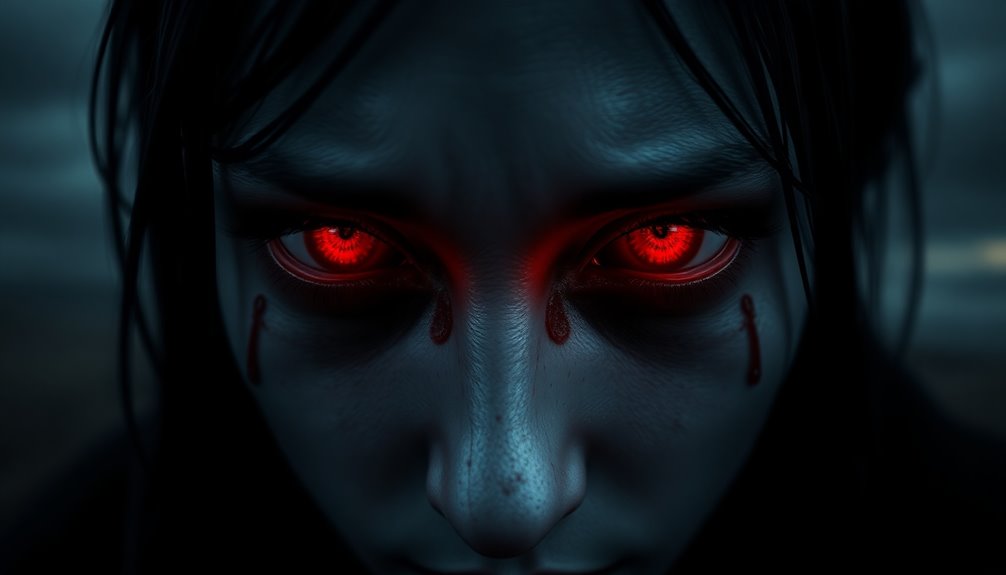
Emotional pain often surfaces unexpectedly, leaving you feeling helpless and hopeless. It's often tied to conflicts between your beliefs and the harsh realities of life, creating an acute heartache or a lingering sense of existential dissonance. You might find that losses—whether they're relationships, health, or material possessions—trigger deep emotional suffering.
When you face the inevitability of an undesirable outcome, it can intensify your feelings of despair. This emotional turmoil doesn't just affect your mind; it can manifest physically, intertwining with pain and distress. Each body part is linked to specific emotions, and this connection can reveal deeper layers of your suffering. An example of this is how narcissistic abuse recovery often entails uncovering emotional pain tied to physical symptoms. Practicing stress management techniques can also alleviate some of these physical manifestations. Moreover, the experience of gaslighting in custody battles can exacerbate emotional pain, leading to feelings of confusion and self-doubt.
Individuals with Borderline Personality Disorder often experience intense emotional responses that can complicate their relationship with pain and suffering, highlighting the need for effective coping strategies. Sometimes, spiritual issues can complicate your relationship with physical pain, leading you to refuse treatments based on personal beliefs. It's crucial to recognize that this experience of "total pain" often stems from unprocessed emotional and spiritual conflicts.
Acknowledging and integrating your pain is vital for healing. Practices like yoga, breath-work, and meditation can help you transform your relationship with yourself and release pent-up energy.
Spiritual Protection
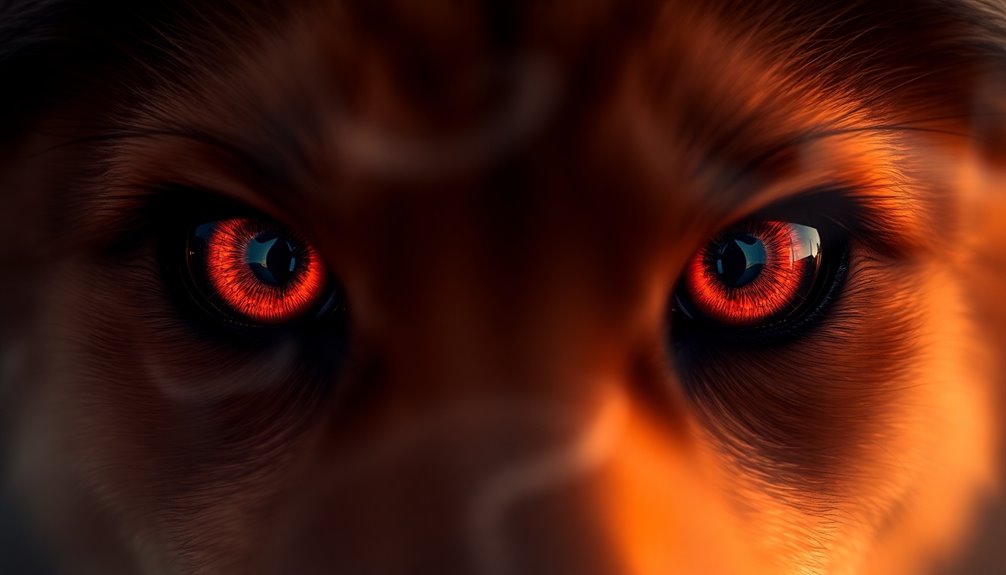
Spiritual protection involves tapping into various methods to safeguard your energy and well-being from negative influences. One powerful approach is to request protection from a higher power, like God, the Universe, or your angels. This guidance is always available when you ask, providing you with constant support and shielding from negativity. Remember, faith in this guiding force enhances its effectiveness. Additionally, understanding the predictive modeling of your emotional responses can help you anticipate and mitigate negative energies before they affect you.
Another effective technique is protective visualization. Picture a shield or bubble surrounding your body, choosing a color that resonates with you—white for purity, gold for strength, or blue for calm. Set your intention for this shield to block negative energy while allowing positive vibes to flow through. It's important to maintain a healthy auric field as it contributes to your overall vibratory state and resilience against negativity. Regular use of herbal supplements can also enhance your energy levels, further supporting your protection efforts. Incorporating carrier oils into your rituals can help you create a soothing atmosphere that promotes relaxation and enhances your spiritual practice.
You can also use protective objects and crystals. Talismans, charms, and specific crystals like Black Tourmaline or Amethyst can absorb or transmute negative energy. Carry or wear these as jewelry for ongoing protection, and place them in your home for an added energetic boundary.
Lastly, incorporate energy cleansing rituals, such as smudging with sage or taking salt baths. Setting healthy boundaries is crucial; learn to say no to draining situations and create a sacred space for yourself.
Transformation and Change
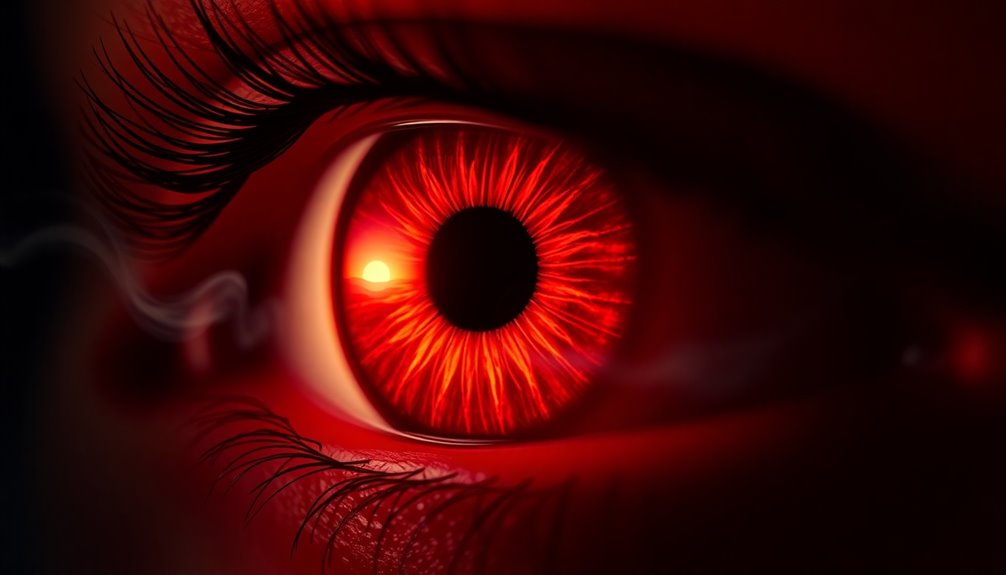
Transformation and change are essential parts of your spiritual journey, often leading to profound personal growth. This lifelong process involves a fundamental shift in how you view the sacred in your life. As you navigate this journey, expect to let go of old beliefs and identities. Incorporating Montessori principles into your environment can foster a space that encourages independent growth during this transformation. Engaging in regular outings with your pets can also provide a sense of emotional support, helping you feel more grounded during times of upheaval. Additionally, embracing mindfulness practices can enhance your awareness and help you stay present amid the chaos. Research indicates that employing positive thought patterns can further enrich your transformation.
This internal renovation may make you feel vulnerable, but it's a necessary step toward becoming a more authentic version of yourself. Think of the butterfly's metamorphosis; it dissolves before emerging anew. You might experience chaos or darkness, akin to the myths of Jonah in the whale, symbolizing the struggle before renewal.
During this cocoon phase, patience is key as you await your transformation. Your meaning system will change, impacting how you define yourself and interpret experiences. Rigorous self-discipline plays a crucial role in this process, pushing you to listen deeply to the pain of old structures breaking down. Trust in divine intervention can alleviate feelings of frustration and impatience that often arise during these transitions.
Embracing a contemplative stance allows you to participate in wholeness and holiness. Remember, spiritual transformation isn't just about change; it's about radical metamorphosis, moving towards a life that resonates with your true essence.
Healing Energy and Rejuvenation
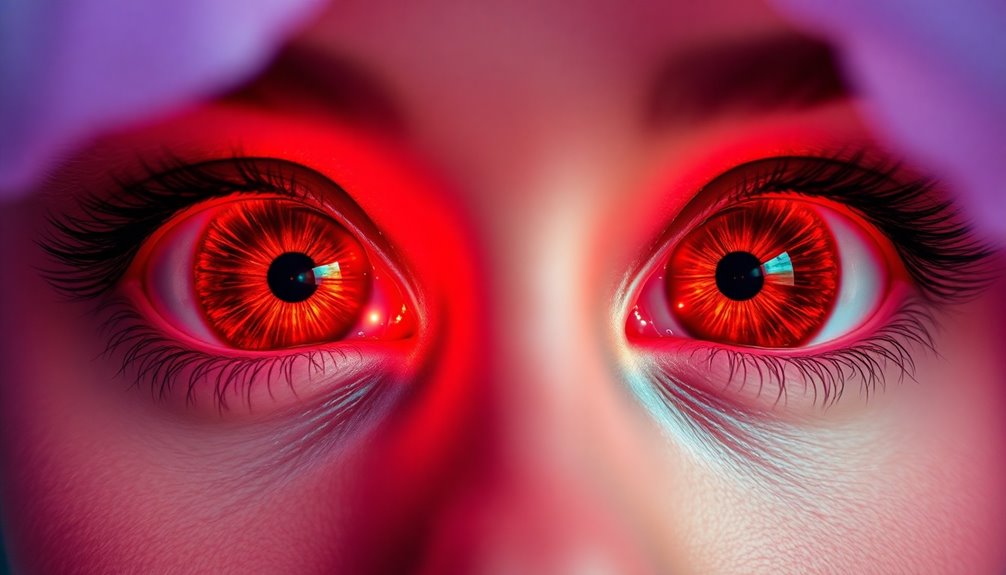
Healing energy and rejuvenation play a crucial role in restoring balance to your life, promoting both physical and emotional well-being. Various energy healing modalities, such as Reiki, Qi Gong, and Pranic Healing, offer effective ways to rejuvenate your spirit and body.
For instance, Reiki involves a practitioner channeling healing energy through light touch, helping you relax and reduce stress. Intelligent Tutoring Systems (ITS) can also provide personalized guidance in effective meditation techniques, enhancing your overall healing experience. Qi Gong combines movement, breath, and meditation to harmonize your energy flow, enhancing overall health. Additionally, understanding credit scores can help you manage financial stress, which can also improve your emotional well-being. Meditation, as a practice, can significantly improve emotional regulation, contributing to a more balanced state of mind. Incorporating essential oils into your routine can also enhance relaxation and promote a sense of calm, especially oils like lavender that are known for their soothing properties.
The color red is significant in energy healing, especially related to the root chakra. This chakra embodies security and stability, grounding you while also igniting your motivation and drive. Red energy fosters movement and action, pushing you to pursue your goals with urgency. Additionally, engaging in practices like breathwork and meditation can help further enhance your emotional balance and clarity.
However, it's essential to balance this energy with rest to avoid burnout. Incorporating tools like crystals, sound healing, and meditation can further support your healing journey. These practices help clear energy blockages and promote a state of homeostasis.
The Power of Crimson Gazes

What do crimson gazes reveal about the depths of our emotions and spiritual insights? When you encounter these intense eyes, they often symbolize heightened spiritual awareness and divine judgment. You might see them as a reflection of omniscience, suggesting a deeper connection to the spiritual realm. Extended separations can lead to emotional disconnection, which may be reflected in the intensity of these gazes.
Crimson gazes can act as gateways into the soul, unveiling your inner truths and intentions. These fiery eyes also powerfully represent intense emotions, such as passion, love, and anger. They evoke a sense of urgency, transforming your understanding of life's vital energies. When you witness this color, you connect with the essence of existence, reminding you of your spiritual courage. Moreover, crimson is associated with Azrael's Ruby Red, which embodies passion, vitality, and courage, encouraging self-discovery and spiritual empowerment. In relationships, the presence of strong communication skills can enhance the understanding of such intense emotional experiences.
However, crimson gazes can also carry darker connotations. They might symbolize malevolence or chaos, representing the fury of demonic forces. This duality emphasizes the complex nature of such gazes, as they embody both sacredness and danger.
Ultimately, the power of crimson gazes lies in their ability to evoke profound emotional responses and spiritual transformations. They remind you of sacrifice and redemption, guiding you through your journeys of love, courage, and self-discovery.
Red Eyes in Different Cultures

Red eyes carry a variety of meanings across different cultures, often reflecting unique beliefs and interpretations. In Hindu and Vaishnavist traditions, reddish eyes symbolize divine beauty, especially in descriptions of deities like Lord Krishna. Krishna's eyes are compared to the inner part of a lotus flower, showcasing both allure and emotional depth.
However, in some texts, reddish eyes in women might indicate health concerns, potentially affecting their marriage prospects.
In Eastern cultures, red is generally associated with luck and prosperity, but there's no specific symbolism for red eyes. Instead, red signifies love and celebration, often seen in wedding attire.
Western cultures typically view red eyes as signs of fatigue or health issues, lacking any spiritual significance. They might evoke negative connotations rather than positive interpretations. Moreover, some cultures associate red eyes with the evil eye, highlighting superstitions regarding health and misfortune.
Across various cultures, reddish eyes can also signal health problems or superstitions about impending illness. Generally, red eyes don't carry positive spiritual meanings, and their interpretations vary widely.
While some cultures celebrate the color red, it doesn't extend specifically to the symbolism of red eyes, emphasizing a practical understanding of their appearance.
Interpreting Personal Experiences
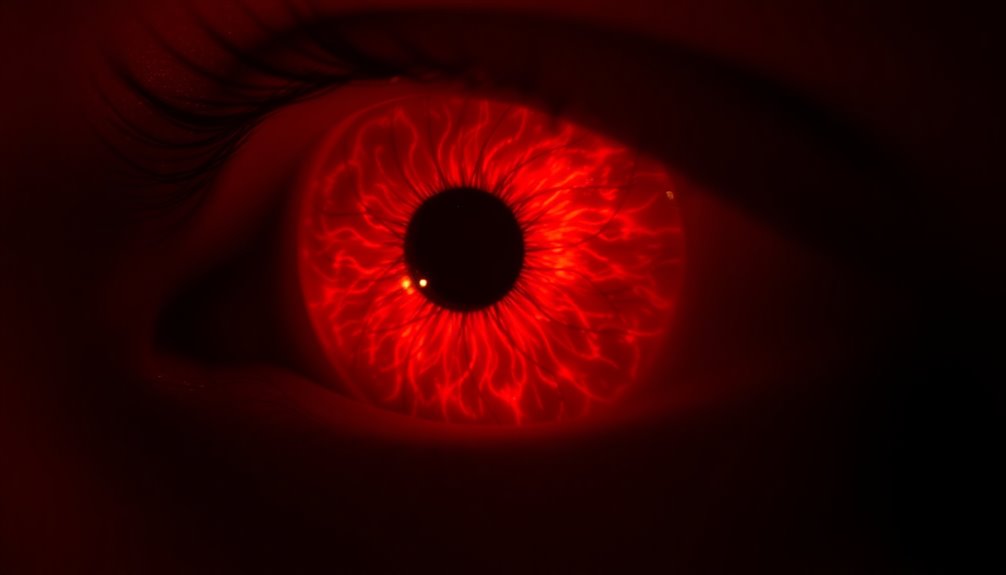
Interpreting personal experiences can be a profound journey that shapes your understanding of spirituality. Each spiritual encounter—whether through meditation, prayer, or ritual—can transform your beliefs and worldview. As you reflect on these moments, it's essential to recognize that your interpretation may be influenced by pre-existing beliefs, potentially leading to confirmation bias.
Your ego plays a role in determining which aspects of the experience resonate with you, so it's helpful to sit with the unknown. Allow yourself to process the experience without rushing to categorize or judge it. This patience fosters deeper reflection and integration of insights into your life. Additionally, many experiences may be linked to psychological or neurological factors, reminding us that our understanding can be complex.
Consider jotting down your raw emotions and sensations immediately after the experience. This practice helps clarify thoughts later on, allowing for a more genuine understanding.
Remember, different perspectives can lead to varying interpretations, so stay open to exploring multiple angles.
Ultimately, these spiritual experiences can profoundly impact your life, offering comfort, strength, and a sense of unity with all living things. Embrace this journey of interpretation; it's a vital step in deepening your spirituality and personal growth.
Embracing the Symbolism of Red Eyes
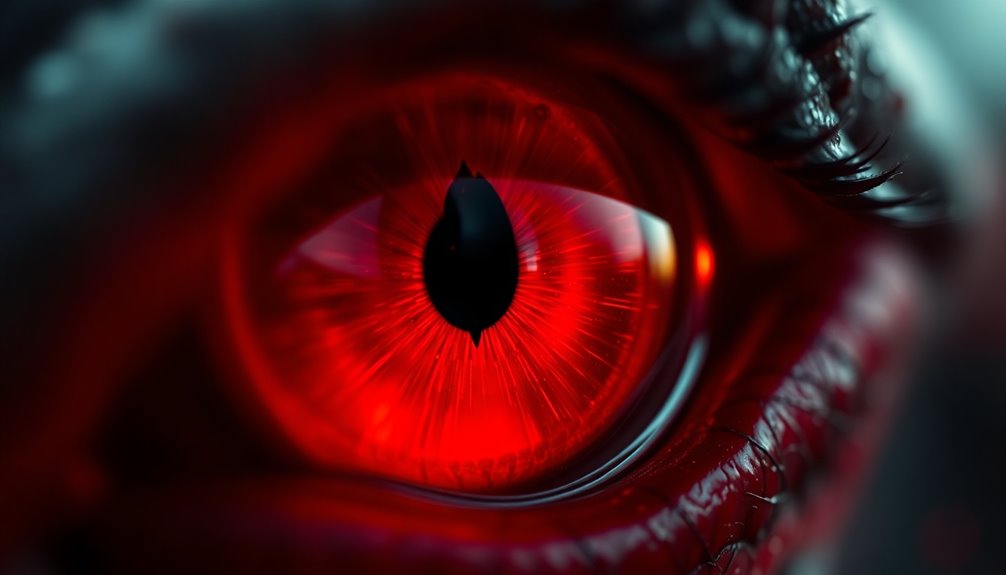
Throughout various cultures and spiritual traditions, the symbolism of red eyes has emerged as a powerful and multifaceted representation of human experience. When you embrace this symbolism, you tap into the raw energy of your innermost emotions—passion, intensity, and fervor. Red eyes reflect your deep feelings and strong desires, serving as an emblem of your dedication to your pursuits. They remind you of your life force and inner strength, fueling your existence. Additionally, they serve as reminders that constant vigilance fosters spiritual growth, encouraging mindfulness and attentiveness in daily life.
However, red eyes also carry a warning. They urge you to stay vigilant and cautious, protecting you against negative energies and potential emotional harm. This protective quality encourages you to trust your instincts and maintain healthy boundaries in your life.
On a deeper level, red eyes symbolize emotional pain and suffering. They invite you to face your inner turmoil and embrace the resilience necessary for personal transformation. By acknowledging your struggles, you can begin to heal and grow.
Lastly, the spiritual aspect of red eyes signifies protection and guidance through life's challenges. Linked to the root chakra, they remind you of your connection to the material world and your ability to adapt and thrive amidst adversity. Embracing this symbolism empowers you on your journey.
Frequently Asked Questions
What Do Red Eyes Signify in Dream Interpretations?
In dream interpretations, red eyes can symbolize various emotions and health concerns. You might be experiencing emotional turmoil, anxiety, or stress, reflecting your inner state.
Alternatively, red eyes could signal physical exhaustion or even underlying health issues, urging you to prioritize self-care.
Consider your personal associations with red eyes; they might indicate a desire for attention or highlight interpersonal dynamics in your waking life that need addressing.
Pay attention to these signs!
Can Red Eyes Indicate Physical Health Issues?
Yes, red eyes can indicate physical health issues. You might experience redness due to allergies, dry eyes, or infections like conjunctivitis.
Environmental irritants and fatigue can also contribute. If you notice persistent redness, it could signal more serious conditions like uveitis or scleritis.
Injuries or underlying medical issues, such as autoimmune diseases, might play a role too. It's important to consult a healthcare professional if you're concerned about your eye health.
How Do Animals Interpret Red Eyes Spiritually?
Animals interpret red eyes spiritually as powerful symbols of energy and intuition.
When you encounter an animal with red eyes, it might signal a deeper awareness or a call for transformation in your life. You may feel a push to embrace your instincts or confront hidden emotions.
This vivid color often represents vitality and passion, urging you to connect with nature and seek clarity in your surroundings for personal growth and healing.
Are There Specific Rituals for Red Eye Symbolism?
Yes, there are specific rituals for red eye symbolism.
You can practice yoga and meditation, focusing on your third eye to enhance clarity and strength.
Consider wearing amulets featuring the red eye to protect against negative energies.
Additionally, reciting protective phrases, like "let it be without the evil eye," can help shield you from harm.
Engaging in personal reflection allows you to confront and heal emotional wounds tied to this symbolism.
How Can I Protect Myself From Negative Energies Associated With Red Eyes?
To protect yourself from negative energies associated with red eyes, wear protective charms like red eye amulets. These can be worn as jewelry or displayed in your home.
Incorporate specific practices, like throwing salt over your left shoulder or using cloves near entrances. You can also utilize crystals like black obsidian for clearing negativity.
Lastly, embrace the color red in your clothing or decor to enhance your protective energy and repel negativity.
Conclusion
In exploring the spiritual meaning of red eyes, you uncover layers of passion, warning, and transformation. These crimson gazes invite you to reflect on your emotional experiences and the protective energies around you. Whether you see them as a sign of danger or an emblem of change, embracing their symbolism can deepen your understanding of your journey. Trust your intuition and let the power of red eyes guide you towards insight and growth.




